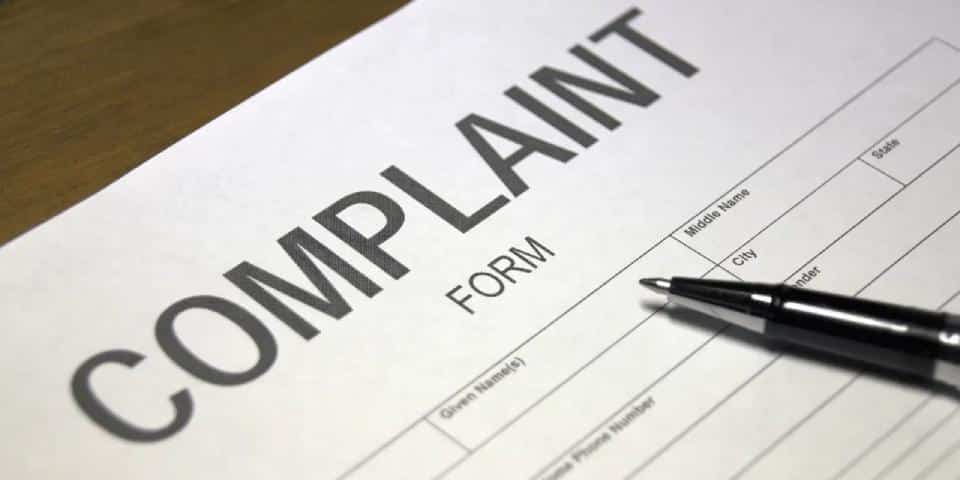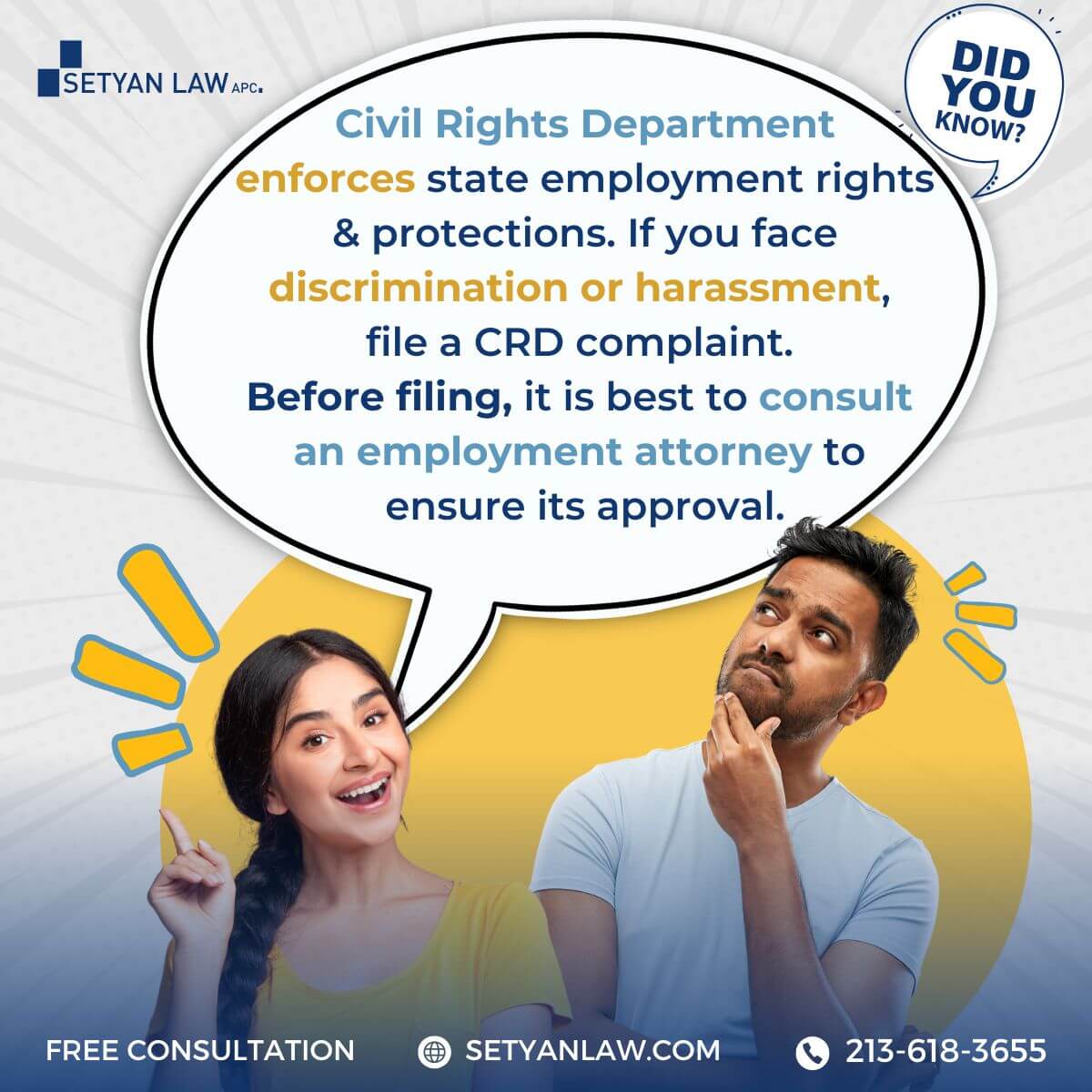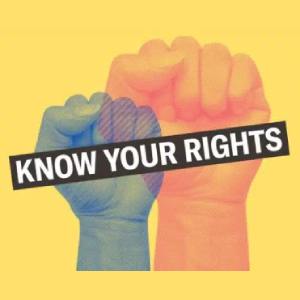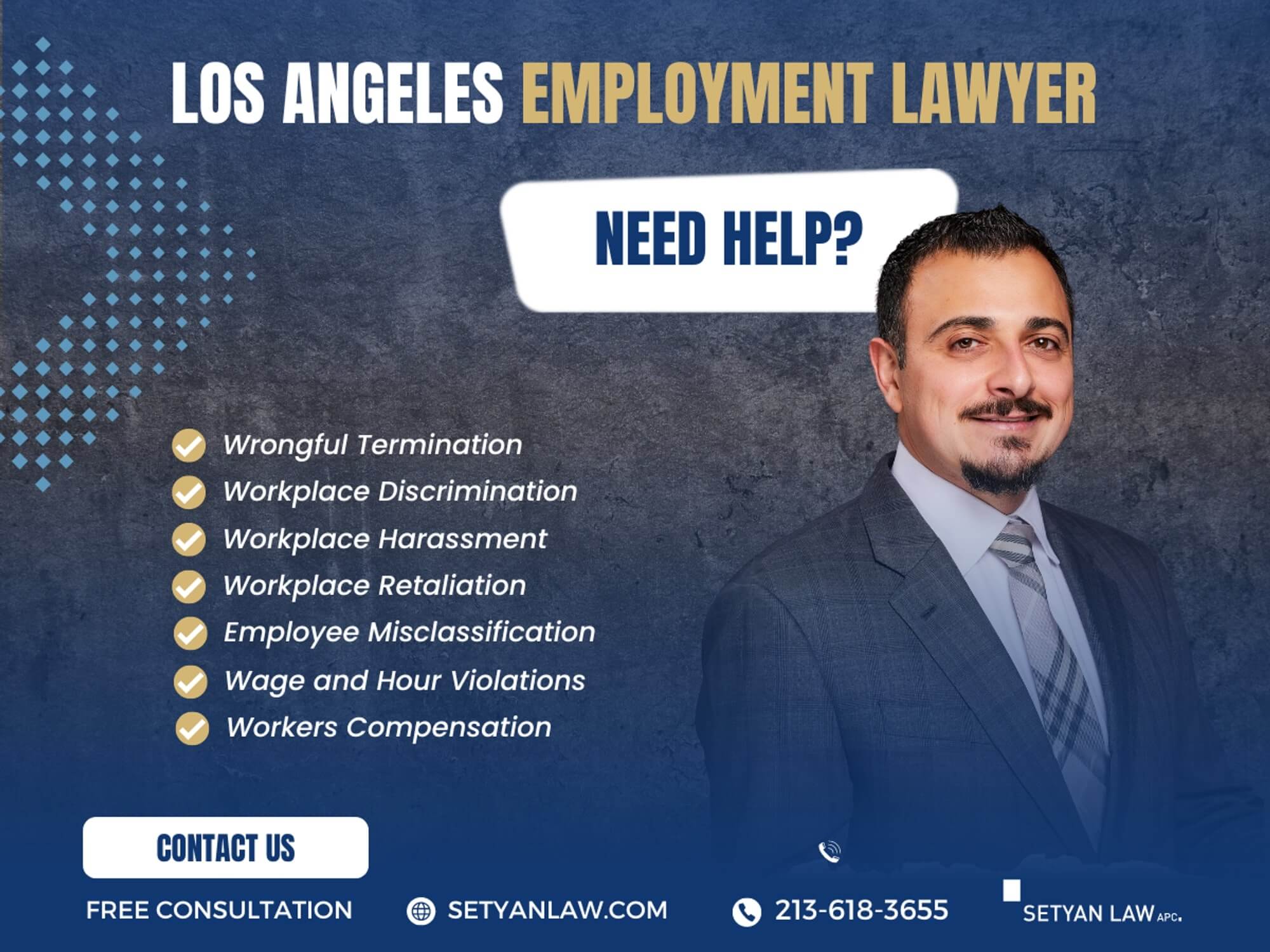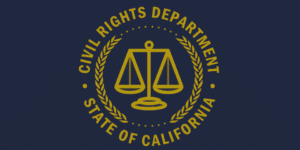Updated October 21, 2025
The CRD Complaint Process in California (Formerly DFEH)
Navigating workplace discrimination or harassment can be daunting, especially when you feel your rights have been violated. In California, the Civil Rights Department (CRD), previously known as the Department of Fair Employment and Housing (DFEH), provides a structured process for individuals to file complaints regarding such violations. This article aims to guide you through the essential steps involved in filing a CRD complaint, ensuring you understand your rights and the procedures that follow.
What is a CRD Complaint?
A CRD complaint is a formal grievance filed by individuals who believe they have experienced discrimination, harassment, or retaliation in the workplace. This process is designed to investigate claims and provide remedies for those whose civil rights have been infringed upon. The CRD enforces various laws, primarily under the Fair Employment and Housing Act (FEHA), which prohibits discrimination based on protected characteristics such as race, gender, sexual orientation, disability, and more.
Key Protections Under FEHA
The Fair Employment and Housing Act offers vital protections for employees in California, including:
- Protection Against Discrimination: Employers cannot discriminate based on race, color, religion, sex, sexual orientation, gender identity, national origin, ancestry, disability, or medical condition.
- Harassment Protections: Unwelcome conduct based on any protected characteristic is prohibited.
- Retaliation Protections: Employees are protected from retaliation for reporting discrimination or participating in investigations.
Understanding these protections is crucial for recognizing whether your situation warrants a complaint.
Steps to File a CRD Complaint
Filing a complaint with the CRD involves several important steps. Here’s a breakdown of the process:
1. Seek Legal Counsel
Before initiating a complaint, it is advisable to consult with an attorney experienced in employment law. A knowledgeable lawyer can assess whether your case falls under FEHA and provide guidance on how to proceed. They can also help you understand your rights and the potential outcomes of your complaint.
2. Gather Evidence
Evidence is crucial in substantiating your claims. Collect relevant documentation that supports your case, including:
- Proof of Protected Status: Documents that demonstrate your membership in a protected class (e.g., medical records, identification).
- Incident Documentation: Notes detailing the incidents of discrimination or harassment, including dates, times, and witnesses.
- Communications: Any emails, texts, or letters that relate to your complaint.
- Performance Reviews: Records showing sudden changes in treatment or evaluations.
3. File the Complaint
Once you have gathered sufficient evidence, you can file your complaint with the CRD. This can be done online or via mail. The intake form will require details about your situation, including:
- Your contact information.
- A description of the discriminatory acts.
- The names of individuals involved.
- Any evidence you have collected.
4. Participate in the Intake Interview
After filing, you will be contacted for an intake interview. This initial discussion allows the CRD to gather more information about your complaint. Be prepared to provide detailed accounts of the incidents and share any additional evidence you may have.
5. Investigation Process
If your complaint is accepted, the CRD will conduct an investigation. This may involve:
- Collecting Evidence: The CRD will review documents, interview witnesses, and gather evidence from both parties.
- Determining Merit: The investigator will assess whether there is reasonable cause to believe that discrimination occurred.
6. Resolution Options
Following the investigation, several outcomes may occur:
- Mediation: The CRD may offer mediation services to help resolve the issue amicably.
- No Violation Found: If no violation is determined, the case may be closed, and you might receive a right-to-sue letter.
- Legal Action: If a violation is found, the CRD may choose to file a lawsuit on your behalf or issue a right-to-sue letter, allowing you to pursue a private lawsuit.
Possible Outcomes of a CRD Complaint
The resolution of a CRD complaint can lead to several outcomes, including:
- Monetary Compensation: You may receive damages for lost wages, emotional distress, or other losses.
- Job Reinstatement: If you were wrongfully terminated, you might be reinstated to your position.
- Policy Changes: The employer may be required to implement changes to prevent future violations.
- Training Requirements: Employers may be mandated to provide training on discrimination and harassment prevention.
Important Timeframes to Consider
When filing a CRD complaint, it’s essential to be mindful of the time limits:
- Employment Discrimination: You must file your complaint within three years of the alleged discriminatory act.
- Other Violations: For most other claims, the timeframe is one year.
Failing to file within these limits may result in the loss of your right to seek legal recourse.
Understanding Your Rights and Responsibilities
As a complainant, you have specific rights throughout the CRD process, including:
- Right to Confidentiality: Your complaint will be kept confidential as much as possible.
- Protection from Retaliation: You cannot be retaliated against for filing a complaint or participating in an investigation.
- Right to Legal Representation: You can have an attorney represent you during the process.
Conversely, you also have responsibilities, such as providing accurate information and cooperating with the investigation.
Conclusion
Filing a CRD complaint is a critical step in addressing workplace discrimination or harassment. By understanding the process, gathering evidence, and seeking legal counsel, you can effectively advocate for your rights. Remember, you are not alone in this journey. Legal professionals, like those at Setyan Law, are available to assist you in navigating these complex situations and fighting for the justice you deserve.
If you believe your rights have been violated, don’t hesitate to take action. Contact a knowledgeable employment lawyer today to discuss your case and explore your options.
Call Los Angeles Employment Attorney Sam Setyan at (213)-618-3655 for a free consultation.


